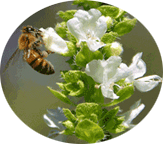The Somatid Cycle of Life by Naessens
Somatids are tiny micro-organisms (germs) that feed upon the poisonous material which they find in the sick organism and prepare it for excretion. These tiny organisms are derived from still tinier organisms called “somatids” by Gaston Naessens. Other researchers discovered these same microbes and called them protits, microzyma, etc.
Somatids are present in the tissues and blood of all living organisms, and also in plant sap, where they remain normally quiescent (quiet and not acting) and harmless. When the welfare of the human body is threatened by the presence of potentially harmful material, a transmutation (change) takes place called pleomorphism. The ‘somatid’ changes into a virus or bacterium which immediately goes to work to rid the body of this harmful material. When the bacteria or viruses have completed their task of consuming the harmful material they automatically revert to the somatid stage.
If the environment in the body becomes toxic, polluted, or doesn’t have the nutrients it requires to maintain health these “tiny dots” hook together into long threads and change into the viruses, bacteria and finally the fungi (candida albicans) that clean up a corpse, if things get that bad. For more information see You Cannot “Catch” Germs, Bacteria or Viruses.

